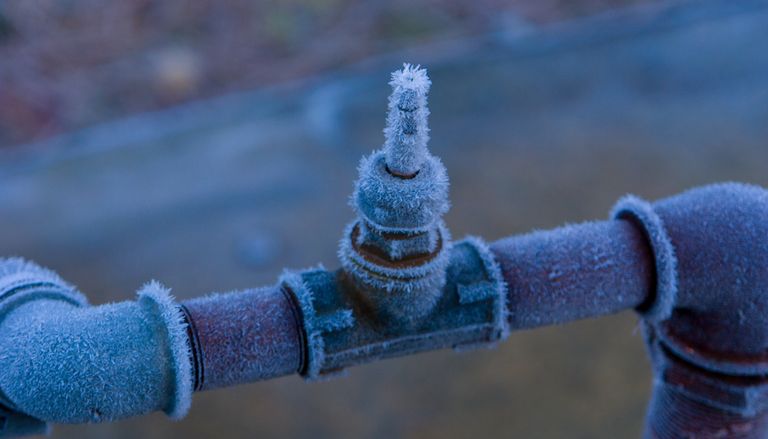Essential Advice to Avoid Frozen Plumbing in Cold Weather: Professional Guidance
Essential Advice to Avoid Frozen Plumbing in Cold Weather: Professional Guidance
Blog Article
Presented here further down you'll find more wonderful tips when it comes to Winter Plumbing Precautions: Preventing Frozen Pipes.

Winter can ruin your plumbing, particularly by freezing pipelines. Here's exactly how to avoid it from happening and what to do if it does.
Introduction
As temperatures drop, the danger of frozen pipes boosts, possibly resulting in pricey fixings and water damage. Understanding exactly how to prevent frozen pipelines is important for homeowners in cool environments.
Understanding Frozen Pipes
What creates pipes to ice up?
Pipelines ice up when exposed to temperatures listed below 32 ° F (0 ° C) for extended durations. As water inside the pipelines ices up, it broadens, taxing the pipe walls and potentially creating them to break.
Dangers and problems
Frozen pipelines can bring about supply of water disturbances, residential property damages, and pricey repair services. Burst pipes can flood homes and trigger comprehensive architectural damage.
Indicators of Frozen Piping
Recognizing icy pipelines early can stop them from bursting.
How to recognize frozen pipes
Try to find reduced water circulation from taps, unusual smells or noises from pipes, and noticeable frost on subjected pipelines.
Avoidance Tips
Protecting prone pipes
Wrap pipelines in insulation sleeves or use warmth tape to protect them from freezing temperature levels. Focus on pipelines in unheated or exterior locations of the home.
Heating techniques
Keep indoor spaces sufficiently heated up, especially areas with pipes. Open cabinet doors to enable cozy air to flow around pipes under sinks.
Protecting Outdoor Plumbing
Garden hoses and outdoor faucets
Detach and drain pipes garden pipes prior to wintertime. Set up frost-proof faucets or cover exterior taps with protected caps.
What to Do If Your Pipelines Freeze
Immediate actions to take
If you think icy pipelines, maintain faucets open up to eliminate stress as the ice melts. Make use of a hairdryer or towels soaked in warm water to thaw pipelines slowly.
Long-Term Solutions
Architectural adjustments
Think about rerouting pipelines far from exterior walls or unheated areas. Include additional insulation to attic rooms, basements, and crawl spaces.
Upgrading insulation
Purchase premium insulation for pipelines, attic rooms, and wall surfaces. Proper insulation aids maintain constant temperatures and minimizes the threat of icy pipelines.
Conclusion
Preventing frozen pipelines needs proactive steps and fast actions. By recognizing the reasons, indicators, and preventive measures, home owners can shield their pipes throughout cold weather.
5 Ways to Prevent Frozen Pipes
Drain Outdoor Faucets and Disconnect Hoses
First, close the shut-off valve that controls the flow of water in the pipe to your outdoor faucet. Then, head outside to disconnect and drain your hose and open the outdoor faucet to allow the water to completely drain out of the line. Turn off the faucet when done. Finally, head back to the shut-off valve and drain the remaining water inside the pipe into a bucket or container. Additionally, if you have a home irrigation system, you should consider hiring an expert to clear the system of water each year.
Insulate Pipes
One of the best and most cost-effective methods for preventing frozen water pipes is to wrap your pipes with insulation. This is especially important for areas in your home that aren’t exposed to heat, such as an attic. We suggest using foam sleeves, which can typically be found at your local hardware store.
Keep Heat Running at 65
Your pipes are located inside your walls, and the temperature there is much colder than the rest of the house. To prevent your pipes from freezing, The Insurance Information Institute suggests that you keep your home heated to at least 65 degrees, even when traveling. You may want to invest in smart devices that can keep an eye on the temperature in your home while you’re away.
Leave Water Dripping
Moving water — even a small trickle — can prevent ice from forming inside your pipes. When freezing temps are imminent, start a drip of water from all faucets that serve exposed pipes. Leaving a few faucets running will also help relieve pressure inside the pipes and help prevent a rupture if the water inside freezes.
Open Cupboard Doors
Warm your kitchen and bathroom pipes by opening cupboards and vanities. You should also leave your interior doors ajar to help warm air circulate evenly throughout your home.

As a fervent reader on How To Avoid Freezing Pipes, I figured sharing that excerpt was smart. Sharing is nice. You never know, you may just be doing someone a favor. Thanks for being here. Come back soon.
Click Here Report this page